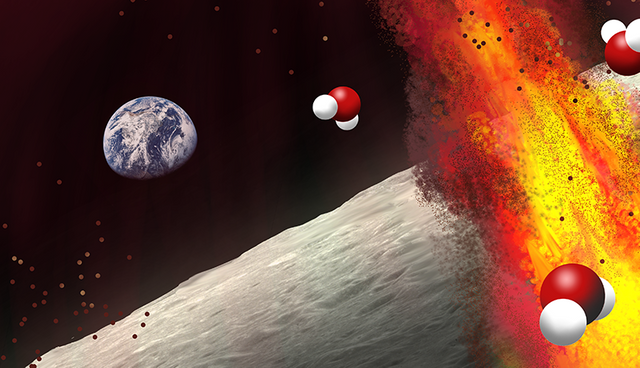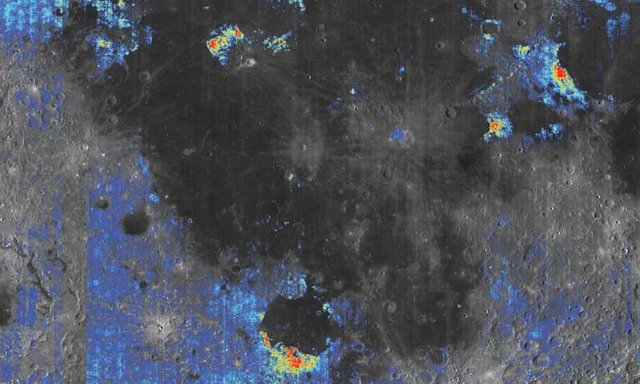Scientists spy new evidence of water in the Moon's interior

From Phys.org
A new study of satellite data finds that numerous volcanic deposits distributed across the surface of the Moon contain unusually high amounts of trapped water compared with surrounding terrains. The finding of water in these ancient deposits, which are believed to consist of glass beads formed by the explosive eruption of magma coming from the deep lunar interior, bolsters the idea that the lunar mantle is surprisingly water-rich.Read more at: https://phys.org/news/2017-07-scientists-spy-evidence-moon-interior.html#jCpScientists had assumed for years that the interior of the Moon had been largely depleted of water and other volatile compounds. That began to change in 2008, when a research team including Brown University geologist Alberto Saal detected trace amounts of water in some of the volcanic glass beads brought back to Earth from the Apollo 15 and 17 missions to the Moon. In 2011, further study of tiny crystalline formations within those beads revealed that they actually contain similar amounts of water as some basalts on Earth. That suggests that the Moon's mantle—parts of it, at least—contain as much water as Earth's.
"The key question is whether those Apollo samples represent the bulk conditions of the lunar interior or instead represent unusual or perhaps anomalous water-rich regions within an otherwise 'dry' mantle," said Ralph Milliken, lead author of the new research and an associate professor in Brown's Department of Earth, Environmental and Planetary Sciences. "By looking at the orbital data, we can examine the large pyroclastic deposits on the Moon that were never sampled by the Apollo or Luna missions. The fact that nearly all of them exhibit signatures of water suggests that the Apollo samples are not anomalous, so it may be that the bulk interior of the Moon is wet."
Detecting the water content of lunar volcanic deposits using orbital instruments is no easy task. Scientists use orbital spectrometers to measure the light that bounces off a planetary surface. By looking at which wavelengths of light are absorbed or reflected by the surface, scientists can get an idea of which minerals and other compounds are present.
The problem is that the lunar surface heats up over the course of a day, especially at the latitudes where these pyroclastic deposits are located. That means that in addition to the light reflected from the surface, the spectrometer also ends up measuring heat."That thermally emitted radiation happens at the same wavelengths that we need to use to look for water," Milliken said. "So in order to say with any confidence that water is present, we first need to account for and remove the thermally emitted component."

Follow @contentjunkie to stay up to date on more great posts like this one.

since the first 'star trek' series was broadcast on nbc i've been fascinated with the possibilities and potentials of space travel and colonization. now with mars being eliminated from the list because of recent discoveries of toxic materials in the surface that render it virtually unusable for agriculture (https://www.space.com/37402-mars-life-soil-toxic-perchlorates-radiation.html ) and nasa's decision to forego the developement of the red dragon landing module (http://www.thespacereview.com/article/3292/1 ) the moon will be the place to further man's expansion into the universe.
keep the space posts coming
very cool !upped and resteemed !👍👍👍
Very good post, I hope you visit mine and you like it
This post has been ranked within the top 50 most undervalued posts in the first half of Jul 25. We estimate that this post is undervalued by $14.06 as compared to a scenario in which every voter had an equal say.
See the full rankings and details in The Daily Tribune: Jul 25 - Part I. You can also read about some of our methodology, data analysis and technical details in our initial post.
If you are the author and would prefer not to receive these comments, simply reply "Stop" to this comment.